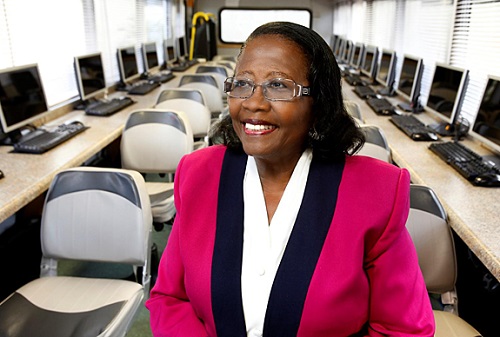
Estella Pyfrom, a 2013 CNN Hero, is bridging the digital divide. Known as “Gadget Lady” to the kids she serves on Estella’s Brilliant Bus, this second oldest daughter of seven children grew up in the segregated South. She was part of a migrant worker family that traveled from Florida to New York and back during the summer months.
“I had to think of a way to get technology out to the underserved neighborhoods. I knew I was going to need a vehicle of some kind…so my option was a bus.” Estella Pyfrom
Four years ago Estella retired after 50 years as a teacher and guidance counselor in Palm Beach County, Florida. When we spoke recently, I found there was no “tired” in retired for her. She could not turn her back on the kids whom she knew were falling behind because they had no access to a computer. Her brilliant solution?
Buy a bus, outfit it with computers and roll it into underserved neighborhoods to beat the digital divide between the haves and the have-nots. Thus, the Brilliant Bus…
EYE: What exactly is the “digital divide?”
ESTELLA: We are in the age of technology, digital literacy. Kids who do not have access to a computer and that technology, due to poverty and other issues, are left behind. Digital technology is critical to education, just like reading and writing, crucial to connectivity, to modern learning style.
CNN: Hero Estella Pyfrom 11/27/13
There are other ways to learn. It’s like the Wright Brothers and flight. There were other ways to get places far away, but they made it a favorable, “better” way to get places. Typewriters are now computers. And, digital technology is more and more the learning style. It is a must for kids to learn and be a part of an even playing field.
EYE: How on earth did you decide to use a bus as an answer to the digital divide?
ESTELLA: I had to think of a way to get technology out to the underserved neighborhoods. I knew I was going to need a vehicle of some kind. The van I had would not be big enough.
“I thought of a semi-truck, one of those 18 wheelers, but I couldn’t drive that. So my option was a bus. I learned to drive a bus as a teenager.”
EYE: It seems like an undertaking like this would take a large monetary investment. How much has this cost you personally?
ESTELLA: All the funding came from personal retirement money, some investments and side jobs I had. I’ve put in more than a million dollars of my personal funds, not all at one time.
The bus, 17 computer stations, infrastructure, the internet, etc. were purchased with my own funds.
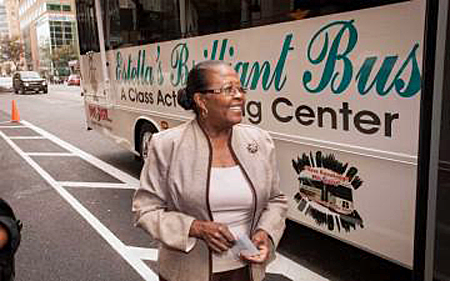
EYE: What is your prime mission?
ESTELLA: Many of the children in the underserved neighborhoods cannot get out to get the services they need. So if I can bring the services to them, I think we have a match.
Not only am I taking technology to them, but the technology is in sync with what the curriculum is in the institutional system.
EYE: What kind of staff do you have?
ESTELLA: I have no paid staff. I have very qualified people who have been school administrators, guidance counselors, teachers and other professionals. Many come from across the state, like web designers. These people say to me, “This is what I can do. What do you want me to do? I want to help you.”
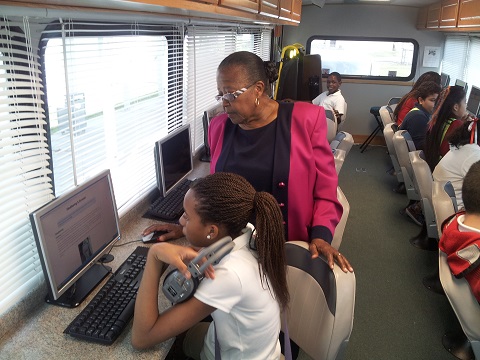
EYE: How do you identify where the bus goes?
ESTELLA: I get emails and referrals now. But, I started by going to community health fairs, shelters, schools and community centers. After evaluating kids’ needs, I schedule them. I also have a Homebound Program to reach the neighborhoods I am not currently serving.
Thanks to a partnership with companies like Comcast, we help families fill out an application so they can get the internet at home. Then, Comcast will arrange an opportunity to get a computer in their home so we can do the reading, writing, math and social studies.
“I am proud to say that we reach out with technology help not only with the bus, but also through this homebound program.”
EYE: How many kids have you engaged so far?
ESTELLA: We have reached out to more than 31,000 children over a 3 ½ year period. The youngest is a group of 3-year-olds. Our oldest is 81! We have no age limit in learning or working on computer skills.
EYE: How do you know if the students are progressing?
ESTELLA: Through software, I can monitor all kids’ progress. We try to teach the older ones to be independent, working on activities on their own at home. We show them where they started, where they are now and how to keep going until they reach 90% proficiency in their grade level. The younger ones have 4-5 people monitoring their progress.
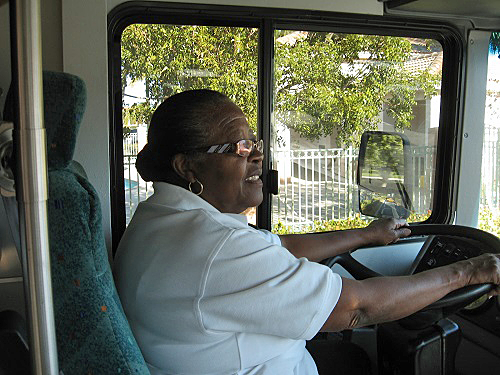
EYE: Do you have specific rules about behavior on the bus?
ESTELLA: The first rule is: Be seated. Wait for instruction. Next, there is no eating, chewing gum or drinking on the bus. Then, they must respect the property of other kids and respect adults on and off the bus. If there is a question, raise your hand, but get permission before speaking. Then, everything falls in place.
EYE: So you have no behavior issues?
ESTELLA: Sometimes there is attitude. The minute I see that happen, I try to take the child aside and find out what the challenges are interfering with being able to be relaxed. We’ve won kids over by having that conversation and letting them know they are also affecting other students.
“We have not had any discipline problems on the Bus yet. Kids understand what we expect from them and they know what to expect from us.”
EYE: I understand the Bus does more than roll into neighborhoods bridging the digital divide?
ESTELLA: The Brilliant Bus project is actually a movement. Under the Brilliant Bus umbrella, we work with those who feed the hungry, refer for health services, private clinics, doctors, etc. We were asked to go to a homeless village to provide tutoring for some kids ages 5-21.
We also extended an invitation to adults, with at least one child, who needed to do a job search or find places to stay. We always look at what we can do for the whole situation and collaborate with partners when we can.
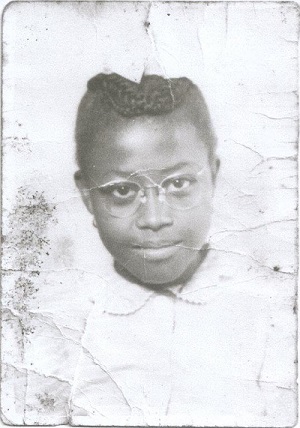
EYE: Were you always a take-charge type of kid in your family?
ESTELLA: I was not always a take-charge type. At age 6, because our parents worked, we all had responsibilities that we had to do. There were some things I could do better because I was a little daring. The responsibility was mine whether I wanted it or not.
I did what I had to do, which is a bit different than take charge. Little did I know that I would have a job where I would take charge of things later on.
Yet, I’d rather not try and do something by myself. I would rather join in and get things done using the team approach.
EYE: How important was education in your family?
ESTELLA: Although my father only went through 3rd grade and my mother only went through 4th grade, they believed in education. They were very smart people. Failure was not an option. They never talked about failure.
They always talked about accepting the challenges and doing whatever it took to make it happen. My parents taught us how to share, be responsible, and to work and overcome challenges.
“Whatever your dreams are or whatever your mission is, keep working at it until you accomplish it.”
EYE: How did you end up using education to help underserved neighborhoods?
ESTELLA: When I was growing up I never thought about being a teacher. I was very aware that none of my neighborhood families had very much. We shared a lot, helped each other and looked out for each other. It was a way of life.
In traveling up to New York and back with the neighborhood families harvesting produce, we came back and lived in the same neighborhood with these families. Once I finished high school and college I wanted to come back and help my neighborhood. I understood the needs of those communities.
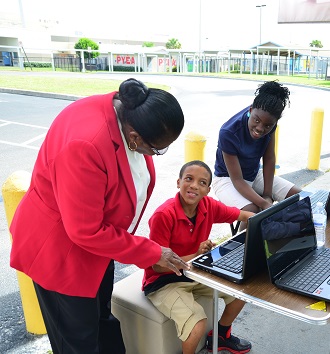
EYE: How did you overcome the educational divide growing up with your circumstances?
ESTELLA: The attitude about migrants when I was growing up was that we would never catch up. You were always going to be behind and never graduate from high school. Well, the attitude my parents had about education was, you do what you have to do.
Sure, you have to leave school before it ends for the summer to do harvesting work; you have only one option, to make the grades. You’ll also be late coming back.
School will already be in session when you return from your work. Yes, you will be behind, but the only option you have is to catch up.
EYE: Do you pass on a similar philosophy to the kids you deal with?
ESTELLA: We pass it on. We encourage them not to dwell on all of the negative things. Take what you have and make the best of it. If you program yourself to say I cannot and will not fail, then you will continue to work on overcoming the challenges that you have.
EYE: If someone wanted to start a Brilliant Bus, how would they do it?
ESTELLA: First, understand there will be challenges. You must have a backup plan. You must have a dedicated group of very talented and committed volunteers. You won’t have a Brilliant Bus without those people. Stay focused and clear on your mission.
“You can start this with the homebound program by reaching out to the community and getting the concept rolling. The bus can come later.”
EYE: Do you ever sleep?
ESTELLA: For me, I average about four hours of sleep. If I get sleepy, I can always just take a nap. Way back when I was raising my children, I trained myself to work to work late hours so I could give my kids and husband quality time. Early rising and going to bed late is, you know, the early bird…
EYE: What about the future of Estella’s Brilliant Bus?
ESTELLA: I am very optimistic. People want to be a part of our team from all over the country. We want the movement to be in every community in the U.S. People who have reached out to me across the world are convinced the project model can be replicated anywhere for underserved communities in education, health services, etc. It can be customized.
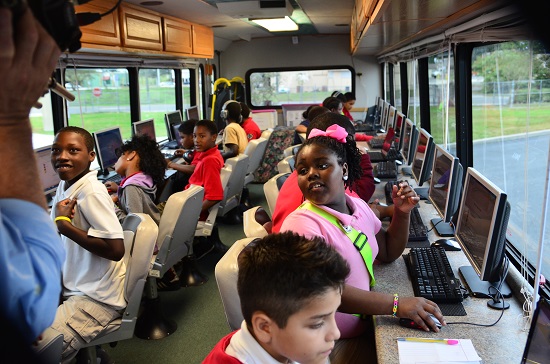
EYE: You are a CNN Hero. Do you see yourself as a hero?
ESTELLA: No, I do not. I asked my husband, “What’s the big deal about all of that fuss?” He told me that I am one of the ordinary people who is making a difference and helping to change the world. No matter how I look at it, I am a CNN Hero.
He also said I am doing things other people are not doing and not expecting anything in return. That is extraordinary. I just feel that this is what I do. This is what I am accustomed to doing. This is what I know how to do.
EYE: You are definitely a hero, role model and angel to many. Thank you for taking precious time to speak with TWE. Continued success to you as Estella’s Brilliant Bus continues to delete the digital divide and so much more.
UPDATES: Estella Pyfrom Continues Bridging the Digital Divide in Her Brilliant Bus
10/29/15: How This Startup Secured Coverage by CNN, NBC and The Super Bowl
2/4/15: Microsoft’s Super Bowl Commercial, 2015: Estella’s Brilliant Bus
Photos: Christopher Bivens
TWITTER: @EstellaPyfrom
###
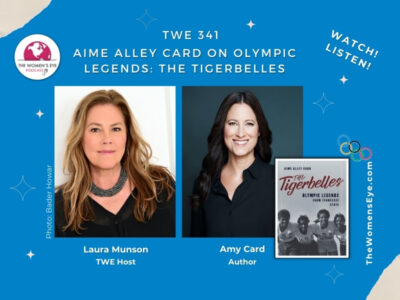
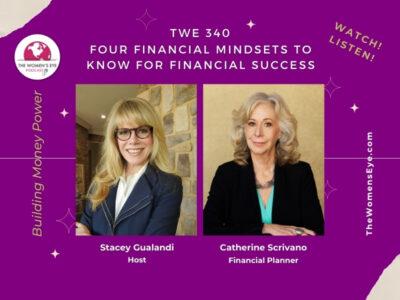
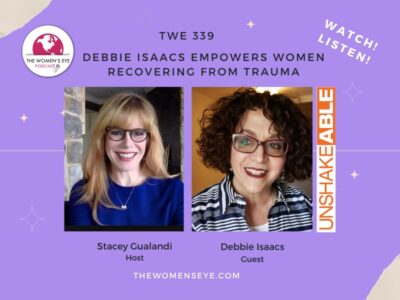
Leave a Reply